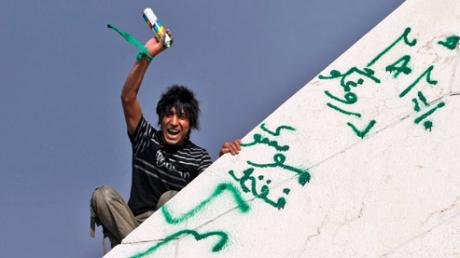
Thirty years after the revolution of 1979 (that marked the beginning of the XXI century with the return of religion to the forefront of history) Iran knows a new uprising triggered after the massive fraud organized to maintain Ahmadinejad as President.
Four periods have marked the past thirty years (1) the establishment of new institutions, (2) the Iran-Iraq War (3) the slackness in the control of the society and the gradual liberalization of the economy which begun after the election of Khatami in 1997, and finally (4) the anti-western religious radicalization, launched by Khamenei, in response to the student riots of 1999 (radicalization which has accelerated since the first election of Ahmadinejad in 2005).
The goal of the fundamentalist extremists is to switch from the Islamic Republic, organized around a delicate balance between the Supreme Leader and the Council of Experts embodying religious power in one hand; and in the other, the Presidency and the Parliament which are both elected bodies (in their definition), to an Islamic government giving the total control of the country to religious and their allies. Politically, the tightening of the scheme was orchestrated by the rise of the Revolutionary Guards, which took control of large swathes of the economy, starting with the black market. Domestically, a ferocious repression was unleashed on the society and internationally, Iran took the head of the fight against the United States and Israel. Strategically, IRI has specialized in the proliferation through the fabrication and firing of missiles, the satellite Omid, and especially the pursuit of a nuclear program with military aims.
A flawed election could lead to a true revolution. Due to the intensity of the repression, if the insurgency has not yet caused the overthrow of mullahs but it has already delegitimized the principles, institutions and leaders of IRI. Three points are noteworthy. First, despite of dozens of dead, hundreds of missings and thousands of arrests, the protest continues. The major divisions are growing within the clergy, with the proliferation of positions hostile to Khamenei by predominant ayatollahs like Montazeri, Sane’ie, or Dasteguibe. Finally the system is caught in its own trap; the political contestation which also became a religious protest, turned radical slogans of the 1979 revolution against the fundamentalists themselves.
The movement is revolutionary in that it reveals the true nature of the Iranian regime and is the bearer of a project seeking to reconcile Islam and freedom. The Islamic Republic has clearly appeared as a corrupt dictatorship, structured around the merger of the Revolutionary Guards and the supreme leader, performing a coup against permanent citizens, organized around a vast repressive apparatus that controls the economy and the society. The religious character of the regime becomes hence a fiction when its survival is based on the violence against people. The Islamic Republic was based on faith, nationalism and hysterical terror that are the hallmark of totalitarian regimes. These three pillars are cracked as openly criticized by the public and a part of the clergy. The opposition, silenced, does not provide less support from the majority of the population, leadership potential and an alternative plan based on a form of distinction between religious and political autonomy of the state, liberalization of the economy and society, reintegration of Iran in the international community.
Four months ago, Iran saw a genuine of a revolution for freedom. A revolution which has huge potential consequences.
Internally, further repressions – characterized by the expansion of the repressive apparatus, the rise of violence against the population, the exacerbation of nationalism against minorities, diplomatic provocations – is inevitable. Therefore, a rapid denouement and a velvet revolution are excluded; Radicals and Revolutionary Guards have too much to lose from a rapid liberalization. Similarly, the end of the current situation with a foreign military intervention is highly unlikely. A foreign attack would be counterproductive as it would legitimize the current leaders. The example of China – combining political authoritarianism and accelerated economic development – is unattainable, as it would mean an easing in the control of the economy and open borders – with the prior of an international normalization of IRI policies, and therefore an agreement over its nuclear energy. It’s then likely that the violence of the dictatorship would be defeated by the Iranian people themselves.
Internationally, IRI’s missile tests and its nuclear ambitions will still strengthen Iran’s isolation and the fears of the Arab world. The violent repression has already destabilized the image of the Islamic Republic in the Muslim world. The intensity and duration of disturbances has created doubt on the stability and sustainability of the system, affecting the status of regional power in the country and undermining its allies (Hamas and Hezbollah). For all these reasons, the crisis constitutes a success for the Obama administration, even if it jeopardizes his plans for nuclear disarmament in the short term. For western democracies, the time is never less than the military option but indirect support of the Iranian society.






